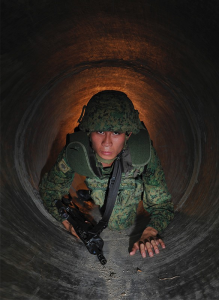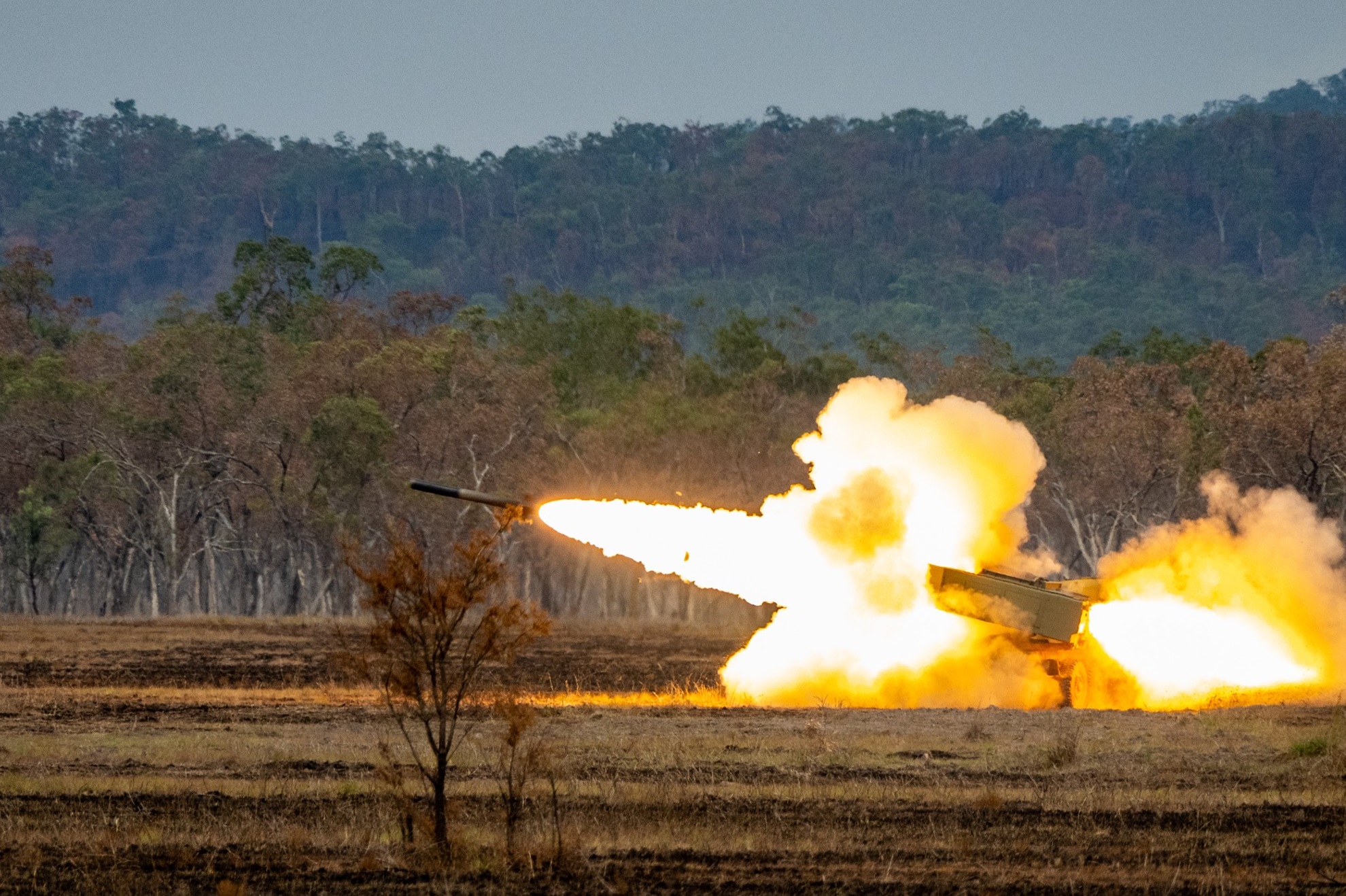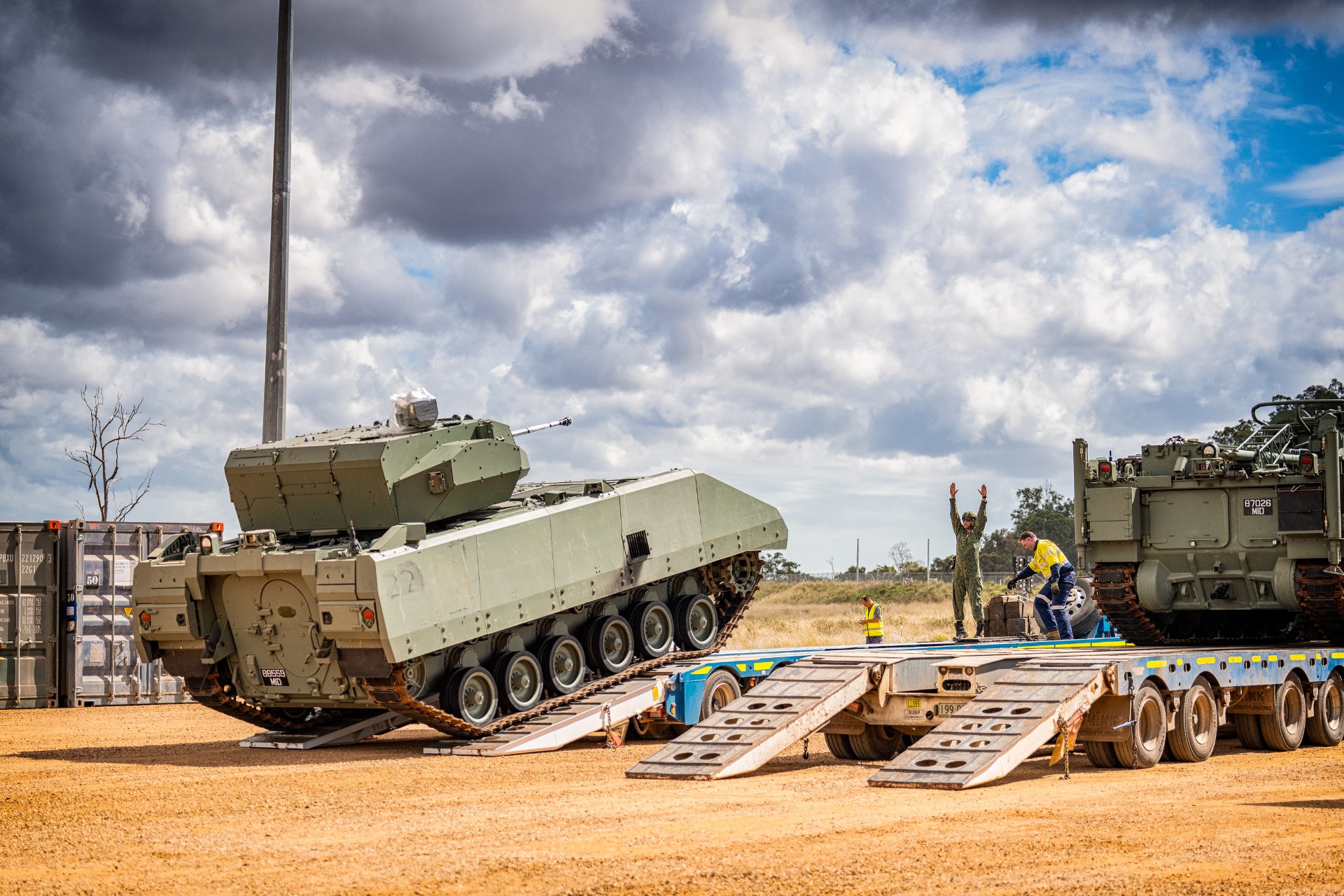OPS & TRAINING
TRAINING TRAINERS
11 Jul 2013

Warrant Officers and Specialists (WOSpecs) can look forward to becoming better warfighters, trainers and leaders as several improvements to their training are made this year.
When 2nd Sergeant (2SG) Derren Rochi crossed the finishing line that marked the completion of the Jungle Confidence Course (JCC), he could not help but shed tears of relief and joy.
He had endured nine days of navigating the thick, unforgiving jungle overseas with a 25kg field pack and only two days' worth of rations. To top it all off, his final task was to find his way back to camp.
The gruelling JCC journey was where 2SG Rochi discovered the limits of his endurance. "The terrain was torturous. I've never been through such an experience in my life. I was at my lowest and missing my wife," said the 24-year-old who has been married for a year.
On how he psyched himself to keep moving, he said: "I was already far away from my family so I did not want this time to go to waste. I wanted to achieve something so I really pushed myself."
The effort was, of course, worth it. The platoon sergeant from the 9th Battalion, Singapore Infantry Regiment (9 SIR), now wears the JCC badge proudly on his uniform. "I can tell my platoon commander that I too have the JCC badge!" he said with a grin.
2SG Rochi was going through the new and improved Basic Warfighter - Platoon Sergeant (BWF-PS) course, held for the first time this year. The JCC, which infantry officer cadets take as part of the Officer Cadet Course, is one of several new components in the revised curriculum.
The BWF-PS course is the product of two key changes made to the WOSpecs' military education and training education roadmap.
The first change was the inclusion of formal training and lessons in leadership courses to better prepare WOSpecs as trainers. Second, certain courses that took WOSpecs away from their units for short durations at a time were combined. This minimises the overall disruption to the units' own training programme when these WOSpecs are away.
Better trainers
Senior Warrant Officer (SWO) Tamizh Kannan explained that these changes are part of continuous improvements to strengthen the WO Corps since the launch of the Enhanced Warrant Officers Scheme in 2010.
As Chief Master Trainer of the Specialists and Warrant Officers Institute (SWI), he was heavily involved in the changes. SWI is responsible for the WOSpecs' route of advancement in the SAF.
Since June 2011, SWI has worked with the SAF's personnel, training and leadership institutes to brainstorm and develop ideas to meet three goals.
First, the changes should meet the demands of the 3rd Generation SAF. Second, it should differentiate development for the Regulars from that of Full-time National Servicemen (NSFs). Third, the WOSpecs' training curriculum should be pegged to their responsibilities as they move up the ranks. This means that what is taught in the junior-level courses is not repeated at advanced-level training.
"All these years, we've (included) some trainer skill sets but they were not holistic. This time around, we are focusing on sharpening training development as well as warfighting and instructional competencies," said SWO Kannan.
Through these lessons, WOSpecs would be more competent and thus more confident when training today's highly educated and tech-savvy generation.
"To become a teacher (in Singapore), you must go to NIE (National Institute of Education) to learn the pedagogies. They need to nurture students; the SAF's role is, in a way, similar. Here, we nurture soldiers. To be respected, our trainers need to have the skill sets to groom, coach and teach," added SWO Kannan.
One of the WOSpecs' roles is teaching the fundamentals of soldiering. They include fitness, navigation, marksmanship and Individual Field Craft.
"I always tell my fellow WOSpecs, you may have a degree but in order to become an effective warrant officer on the ground, the training roadmap is what ensures competence and confidence," added the 46-year-old.
When SWO Kannan enlisted 28 years ago, he had two O level passes. Today, the veteran encik has a Bachelor's degree in Human Resources. He is now pursuing his Masters degree in Arts and Education at NIE.
On how these changes would value-add to the SAF, SWO Kannan said: "The officers look at the strategic planning while the WOSpecs' main focus is on force preparation and soldiering fundamentals."
Citing the example of the new BWF-PS course, which has expanded from five to 13 weeks, he added: "I have the opportunity to send the specialists to JCC for experience and exposure. They (also) go through two weeks of improving their shooting skills in the Small Arms Coaching Course.
"With all these, when the specialists and the officers meet in the unit, they become very effective partners. They can complement each other. That would strengthen the SAF."
"Yes, Sergeant!"
The original Warfighter Course was introduced in 2010 to build up WOSpecs' fitness levels and soldiering fundamentals before they went on their Company Sergeant Major (CSM) tours. But feedback from course participants indicated that some of these lessons would have been more beneficial if they had been learnt earlier.
As such, the five-week Platoon Sergeant course was beefed up with selected warfighter course modules to form the new 13-week BWF-PS course. Most participants in the course are Regular specialists who had just graduated from their Specialist Cadet Course. The BWF-PS would deepen the specialists' skill sets and boost their confidence before they took on the role of section commanders and platoon sergeants.
The BWF-PS course places great emphasis on the specialists' warfighting and trainer skills, and aims to make competent, fit and committed specialists out of the soldiers. The course comprises modules in small arms coaching, physical training, leadership and confidence-building. It also includes staples like the Individual Physical Proficiency Test (IPPT) and the Standard Obstacle Course (SOC).
In her role as a platoon sergeant in the 23rd Battalion, Singapore Artillery (23 SA), 1SG Kristen Ng is seldom required to navigate with a compass outfield. However, the 25-year-old counts the numerous navigation exercises that she went through as valuable experiences. "It built up my confidence because these are soldiering fundamentals. If I need to use the compass to lead my men one day, I would be able to do it," she said.
And while training men for the IPPT was not new to her, the information she picked up from the SAF's physical training instructors was a boon. For example, she learnt about the core muscles that her men needed to build up to score in the IPPT. This equipped her with the knowledge to devise strength-building exercises to help them.
Instructor in Headquarters (HQ)Guards 1SG Ahmad Iskandar has been in the SAF for six years. Among his 80 peers in the BWF-PS course, who are around 22 years of age, he was decidedly more experienced. But the 27-year-old did not rest on his laurels. "Every course gives me knowledge that I do not have," he said.
One of his key takeaways, for example, was learning how to speak to his men in a more amicable manner. By watching the senior WOs at work and observing "their style of doing things", he picked up a few tips. "When we want to scold someone, we are a bit too strict. The approachable way is much better. (The senior WOs) will joke with you but when they tell you something, you know it s serious."
Combining forces
The Warfighter Course has also gone through a revamp. Three pre-CSM courses (the Warfighter Course, the CSM course and the Joint Foundation Leadership Course) were combined to form the nine-week Warfighter CSM (WF-CSM) course. Separately, the courses would take 13 weeks to complete.
The WF-CSM course focuses on building senior specialists' abilities in instructing and leadership as well as imparting advanced warfighting skills. It also prepares them for WO-ship.
To strengthen their warfighting skills, senior specialists have to complete five route marches. The longest is 32km long and includes crossing of water obstacles.
The Australian Strengthening Conditioning Association (ASCA) course was also included in the revised syllabus. In Australia, ASCA-accredited coaches train athletes and teams up to Olympic levels.
Another new element in the WF-CSM course is the Advanced Certificate in Training and Assessment (ACTA) programme. It is accredited by Singapore's Institute of Adult Learning, and equips participants with the know-how to design and teach using adult learning strategies.
Staff Sergeant (SSG) Steven Lim is one happy client of the ACTA programme. As the Silent Precision Drill overall-in-charge in the Military Police Command, he is in charge of 20 squad members. He explained that when he first took up the appointment, he had felt that he was lacking in areas such as drawing up lesson plans and risk assessment checklists.
"Now, I have a better picture of what I am doing and areas I can improve on, and give feedback to my unit," said the 27-year-old. SSG Lim has been in the SAF for about seven years.
"The WF-CSM course has increased my confidence in coaching my men. (For example), from the Army Management Safety course, I realised that there were some safety aspects in my unit that I could improve on," he said.
For Master Sergeant (MSG) Muhammad Nur Alif, the Action Learning Process (ALP) model was one of his biggest takeaways from the WF-CSM course. The model is broken down into three parts - the before-action-review, during-action-review and after-action-review. This was particularly useful to the 30-year-old as he is an instructor in Specialist Cadet School (SCS) 3.
To date, he has accumulated four thick ring files of notes from his three-year experience in SCS. With the ALP model, he can better evaluate past activities and sieve out learning values and areas to improve in.
"Before they (the specialist cadets) come to me, I will refer (to my notes) to see how to engage them and get them to better learn new skills," he said.
Even during the course, the cadets were on MSG Muhammad's mind. Before he booked out at the end of the day, he would pass by his company line. Whenever he saw his cadets, he would grab the chance to share what he had learnt during the day.
"I put what I have learnt to good use. To me, that's achieving something.
"I'm looking forward to my CSM tour because I have more to give. Back in my company line, I would always take over when my CSM was not around. Someone must do it, so I did," said the father of three.
Moving forward
At the first WF-CSM ceremony held on 23 May, guest-of-honour Brigadier-General Lam Shiu Tong, who is Commander of the 2nd People's Defence Force, encouraged the senior specialists to explore new grounds with their solid foundation in leadership and combat skills.
The message was not lost on SSG Lionel Sng. The 25-year-old instructor from the Armoured Training Institute said that when the WF-CSM course first started, his peers were unsure if they could complete the course. "But after everyone got to know one another, there was bonding and encouragement. After each activity, everyone felt satisfied because we realised it could be done after all. We are now tougher and more resilient soldiers and commanders."
On his formula for success, he said: "What the course has shown me is, as long as you have the right mindset, you can go through anything. For this course, I did what I could, I tried to do my best. I know that I did not short-change myself."
ALSO READ IN OPS & TRAINING

Exercise Wallaby 2025: To see better, shoot faster
31 Oct 2025
The SAF focuses on complex strike missions and multi-domain integration in Exercise Wallaby 2025, the 35th edition of its largest unilateral overseas exercise.

Ex Wallaby 25 – Greater Integration and Complexity
25 Oct 2025
The 35th edition of the SAF’s largest unilateral overseas exercise is an opportunity for expanded scale and deeper integration towards an effective, networked fighting force.

Ex Forging Sabre ramps up use of unmanned assets in integrated strike operations
12 Sep 2025
In this 10th edition of Exercise Forging Sabre, the SAF sharpened its cutting edge for the dynamic modern battlefield, with expanded integration between manned and unmanned platforms.


